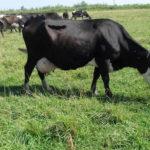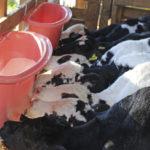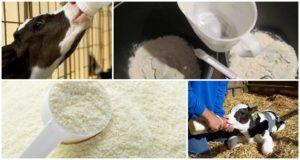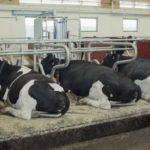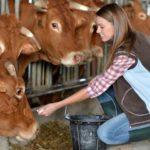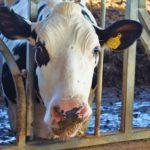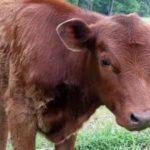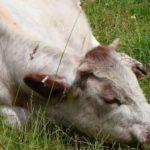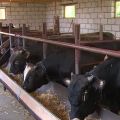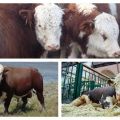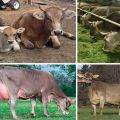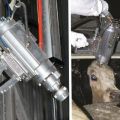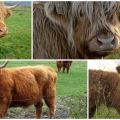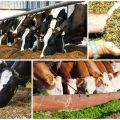How to properly care for a cow at home, tips for beginners
For centuries, the cow was the breadwinner for the entire family of the peasant and then the farmer. She gave milk, meat, skins, supplied sour cream, cream, butter, and numerous varieties of cheeses to a person's table. Without this pet, many families simply would not have survived, and those who had it were considered, if not rich, then wealthy. Therefore, everyone knew perfectly well how to take care of a cow.
Cow conditions for beginners
Nowadays, the situation has changed somewhat, but many rural residents, especially farmers, prefer to keep cows in their subsidiary plots. Some have a "walking dairy factory" as a source of income, others keep for the needs of their own families. In order to understand how to keep such a large animal, it is necessary to find out in what conditions it should live, what to feed, how to care for it. You should start from the place where a cow or several animals will live.
The following types of cattle keeping are used:
- Stoilovoe. This method implies keeping cows without grazing, it is used in those places where farmers and villagers have to do without pasture due to the specifics of the relief and due to the fact that all free land is plowed up and occupied.
- Pasture. This method is suitable for raising young stock and fattening animals for meat. Milking of cows is carried out directly on the pasture, in equipped buildings.
- Mixed stall-pasture. Due to the specifics of their feeding, cattle are indoors at night, and are driven out to pasture during the day. It is especially beneficial to keep dairy cows, as they eat free pasture, and thanks to fresh grass, they give quality milk.
- Also, cows can be kept on a leash, especially if there is not enough space for a large barn, and the animal has a rather tough, restless disposition. With this method, special requirements and conditions must be observed so as not to harm the cow.
It is important to properly equip the stall for keeping the animal. It should be 190 centimeters long, 140 centimeters wide, and 150 centimeters high on the side. The feeder is made in the form of a half oval, containing a daily portion of hay. The harness for the animal should not interfere with movement or lie down to rest, while it should be easily detached.
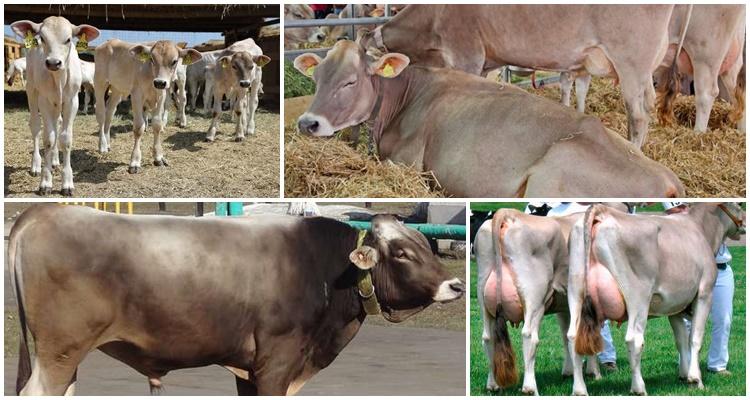
Indoors, the temperature should not drop below 10-15 degrees of frost in winter. You also need to monitor the indicators in the heat - the barn needs to be ventilated in the absence of the herd, as drafts can cause serious harm to the health of cows.They are prone to colds, and high humidity and dirt on the floor can cause a variety of sores and rot on the hooves.
Cattle care rules
Regardless of whether the cow lives on a private household or on a farm, it is necessary to follow a clearly planned daily routine, since the cow gets used to it and behaves calmly, does not interfere with the person caring for her. Strictly according to the schedule, it is necessary not only to feed and milk the cow, but also to clean it, clean the stall and barn, and take it out to the pasture.
Domestic cows should be fed two or three times a day, dividing the daily portion of hay and other food into parts. This is due to the fact that the cow will touch the prescribed daily portion of hay or grass with her tongue when she is full, which will make her wet due to the saliva released. A cow's wet hay may refuse to eat due to a change in smell, which will lead to overspending of the product, while the cow may remain hungry, which will inevitably affect the volume and quality of milk.
It is believed that roughage is given in each of the feedings, and grain and juicy foods are added in the morning and evening. First, concentrates, compound feeds are fed, then juicy and, last of all, coarse food. If food remains in the feeders, it must be removed immediately before it deteriorates and leads to cattle poisoning. Cows are not fed immediately prior to milking because certain foods can give the milk an unpleasant smell or taste.
What should be fed?
A cow's diet varies with the seasons. In summer, her diet contains more fresh green fodder, which in the cold is replaced with hay, preferably from nutritious herbs such as alfalfa and other legumes.
Summer
In the hot summer months, cows and other cattle mainly feed on pasture, that is, grass that grows in abundance on pastures and grazing. For nutritional value, add a small amount of succulent feed.
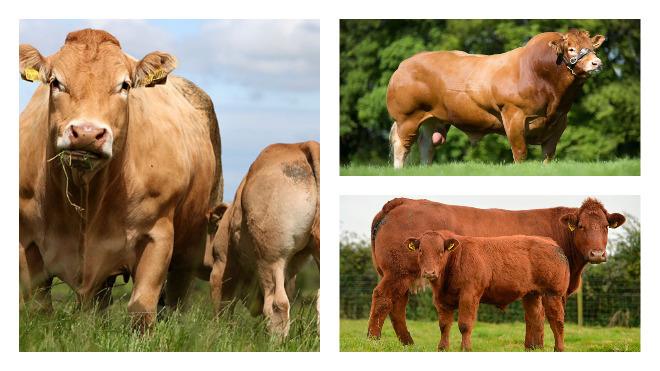
In winter
For a cow with an average weight of 500 kilograms, the following is considered the ideal daily set of products:
- High quality hay - 7-8 kilograms.
- Juicy feed - 3 kilograms.
- Concentrated foods, bran - 3 kilograms.
The animals in the village are most often fed from their own garden, so the cow receives hay mowed on the site and in the vicinity, as well as alfalfa specially sown for keeping the herd.
Also, animals eat carrots, fodder, sugar and table beets, potatoes, turnips, corn silage, green waste, which must be clean and not wet.
The cows are watered to their fullest after giving succulent feed, with clean water at a temperature of at least 10 degrees Celsius. Cold or polluted water is dangerous for the health of the cow, as well as being in the rain, snow, in a damp, dirty room.
Breeding features
In order to properly breed a dairy herd, certain rules must be followed:
- The future dairy cow is left with her mother for no longer than a day, otherwise she will begin to suck milk from other females or even herself.
- The heifer is kept in a separate room and milk is fed to her through a special nipple. Whole milk is given to it until the age of 3 months, then it is given reverse or another substitute.
- At first, the heifer is watered 3-4 times a day, 2-3 liters. If milk remains, the amount is reduced.In the first two months, the volume of milk consumed is gradually increased to 12 liters per day, then they begin to decrease, and in six months they stop altogether. By this time, the calves in the backyard are already taught to drink water on their own.
- From 10 days after birth, the heifer is offered a little mixed feed and hay.
- The heifer is ready for mating in a year and a half. Previously she is taught to wash and massage the udder, milking.
- At home and on the farm, the future cow is carefully prepared for calving using special rules. For example, dry keeping is used for cows that are already producing offspring.
- Childbirth in a first-calf is more difficult and longer than that of a more experienced female. If the owner is also not experienced enough, not having the skills to handle a calving cow and newborn offspring, it is best to invite a veterinarian in advance. Then it will be possible to save both the mother and the calf, avoiding unnecessary suffering and problems. In the future, there are usually no problems with childbirth.
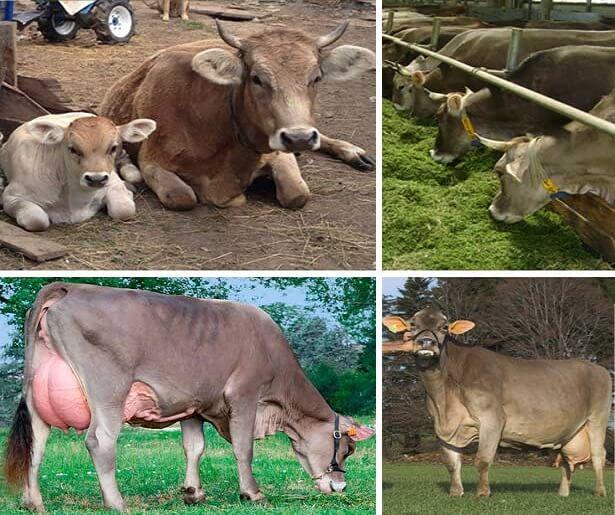
With the right approach to reproduction, it is possible to get a strong and healthy calf, as well as a well-milked heifer, which gives several buckets of high-quality, fatty milk with excellent taste.
Health and prevention
In order for dairy animals to produce quality and safe milk, they must be healthy. Many diseases that cattle are susceptible to, such as tuberculosis and brucellosis transmitted through milk, can be dangerous to humans. Infection can be transmitted through direct contact or the environment, so cows need to be vaccinated against the following diseases:
- Pasteurellosis.
- Brucellosis.
- Foot and mouth disease.
- Anthrax.
- Rabies.
If the cow shows signs of illness, for example, lethargy, refusal to eat and / or water, discharge from the eyes and nose, sloppy appearance, indigestion, it is necessary to urgently call a veterinarian.
In addition to regular vaccinations, the prevention of cattle diseases will be compliance with the hygiene of the premises and the animals themselves, cleanliness and correct selection of feed, excellent housing conditions, as well as the love of the owners for the nurse.
Is it profitable to keep a cow?
In the household farm, you can have one or more cows for personal needs, and donate the surplus milk. But for farmers it is most profitable to keep a large dairy herd, and the milk is not sold in its pure form, but processed into a product in great demand, for example, cheese or other types of cheese, butter, sour cream.
A few tips from an experienced veterinarian
Beginner farmers looking to keep a dairy cow are offered the following tips:
- Be attentive to the condition, appearance and behavior of your wet nurse, notice the slightest deviations and take action immediately.
- Observe the cleanliness of the room and the animal itself.
- The quality of milk directly depends on the feed. Animals should be well-fed, but not overfed - this will affect milk yield.
- The cow must have enough clean drinking water.
- Animals should live in a clean, dry and warm room, protected from dampness and drafts.
- Vaccinations and veterinary examinations should be carried out regularly, according to the requirements of the veterinary system.
These simple tips will help those who want to keep a cow not to make mistakes and get stable milk yield throughout the life of a lactating animal. Burenka has always been a person's breadwinner, and she retains this property to this day.
